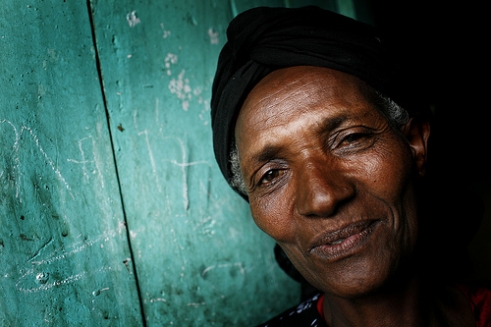By Sarah Nelson and Sarah Marzouk
New research we have conducted reveals how a few simple adjustments to international household surveys used to collect population data could help tackle inequality by ensuring global poverty data gives a true picture of the lives of millions of vulnerable people around the world.

With our partners at Sightsavers and ADD International, we commissioned research into some of the issues in the UN’s High-level Panel report on the post-2015 development agenda.
The Overseas Development Institute carried out the research, which examines the High-level Panel’s report’s call for a “data revolution” and global coordination to improve the quality and availability of data on international development; an essential step to eradicating poverty through the framework that will replace the Millennium Development Goals.
In a world where there will soon be more people over 60 than under 10, any new global development framework needs to address population ageing and its consequences. One of the ways of doing this is to include marginalised groups such as older people in all data collection.
The current problem with national surveys
The standard household surveys used to collect national statistics fail to represent adequately many vulnerable groups, such as older people, people with disabilities and those with mental health issues.
For example, in some surveys, questions about domestic violence are only addressed to women under 50, despite evidence showing that many older people also experience domestic violence.
As a result, governments and aid organisations don’t always know whether the most marginalised people are receiving essential services, meaning some groups are being left behind.
The recommendations
Our research recommends three ways that household surveys could be adjusted to close the existing data gaps.
- Extend coverage: Surveys should be extended to cover individuals outside traditional household units, for example those in residential-care facilities or orphanages, who are currently excluded.
- Collect richer information: Questions should be asked directly to all household members, including older people and people with disabilities rather than expecting the head of a household to answer on their behalf.
- Improve identification: Improvements must be made to the basic questions that are asked to identify vulnerable people, for example those with mental health issues. Particular groups should be over-sampled in order to obtain representative data.
The section of High-level Panel’s report on data disaggregation, which suggests that all data be disaggregated by “gender, location, age, people living with disabilities, and relevant social group”, is a much-needed correction to one of the great faults of the Millennium Development Goals, which left a huge data gap on older people and other vulnerable groups.
However, this step forward must be coupled with a strong narrative on ageing and older people to be effective.
